—
PLAN B: SPIRIT OF THE BAUHAUS
—
—
ART CENTER COLLEGE OF DESIGN: TESTLAB BERLIN
SPONSORED AND HOSTED BY MGX, GX, H.M.C.T
(HOFFMITZ MILKEN CENTER FOR TYPOGRAPHY)
BERLIN, LOS ANGELES, 2019
—
—
STUDIO LEADS: CARO TRIGO AND SIMON JOHNSTON
HUMANITIES: MICHAEL SANS
—
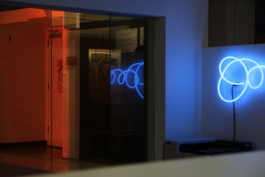
—
IN COLOR
2019
Installation by Johnathan Huang
H.M.C.T Gallery View
The Bauhaus School
The Bauhaus was an art school known for aesthetic and political transgressions and a multidisciplinary approach to teaching. Inspired by the Arts and Crafts movement, it was founded in 1919 in Weimar, Germany by architect Walter Gropius, whose vision was to unify the arts through craft and industry. The school suffered two forced relocations during its time, the first from Weimar to Dessau in 1925, and the second from Dessau to Berlin in 1932, where it operated for ten months under the direction of Mies van der Rohe before being shut down by the Gestapo in 1933. Further relocations occurred during and following World War II, when some key Bauhaus figures emigrated to the United States to continue their work, notably László Moholy-Nagy and his New Bauhaus in Chicago, as well as Josef and Anni Albers’ foundational roles at The Black Mountain College in North Carolina. The vision of Bauhaus artists, designers and thinkers is what we celebrate today, 100 years later.
Plan B: Spirit of the Bauhaus
When the Bauhaus was originally conceived, one of its primary intents was to address and capture the “eternal human spirit” in art, design and architecture. It sought and cultivated wonder, the utopian, the radical. It promoted “looking” as an intellectual pursuit and considered every action in life as a medium for creativity. The Bauhaus was revolutionary in its re-linking of the arts, crafts, life and manufacturing. Driven by socialist ideals, it created a curriculum of new forms that helped craft the “modern.” It did so by forging an art, design and industry education bound by community, risk, and the sharing of ideas and skills. Yet over time, much of the initial spirit has been forgotten or reduced to cold and functional readings of what the Bauhaus was about. Plan B resists such narrow interpretations and, informed by Bauhaus’ thinking, sets out to revive its forgotten or overridden aspects by re-imagining them in a contemporary setting. Plan B conspires to recapture the “daring” spirit of the Bauhaus so as to rediscover its heritage and imagine its future significance.
—
Text by Carolina Trigo
2019

—
PLAN B: SPIRIT OF THE BAUHAUS
H.M.C.T Gallery View
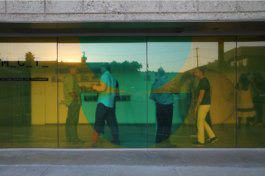
—
NEW RULES FOR LIVING
2019
By Andrew Bernard
Messaging between commerce and art, inspired by László Moholy-Nagy, Ehrlich and Loew
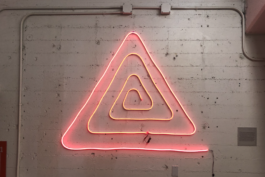
—
LENGUAGE CORPORAL
2019
Video performance by Ximena Amaya
On prosthetics and immigration, inspired by Oskar Schlemmer

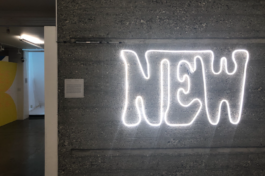
—
IN HER VEIN
2019
Short film by Scarlett Wang
Inspired by the life and loves of Alma Mahler

—
NEW RULES FOR LIVING
(above)

—
UNIVERSAL TECHNOLOGY
2019
Interface design by Heena Chung
A study on the Bauhaus’ and Google’s notion of the “universal”


—
SOUTH CAMPUS GALLERY VIEW
With work by Casey Knapp,
Zixi Shen and Heena Chung

—
H.M.C.T. GALLERY VIEW
With work by Levina Lasmana
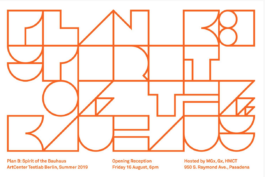
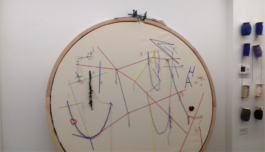
—
SEWING DIALOGUES
2019
Interactive dialogues
by Susanna Suh
Inspired by the "accidental"
and Anni Albers
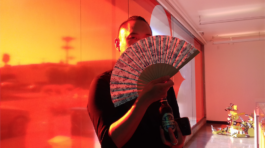
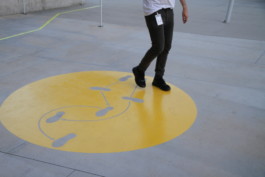
—
PERFORMATIVE TRANSLATIONS
2019
Street interventions by Yuedi Lyu
Inspired by Oskar Schlemmer’s Triadic Ballet
—
LÄDDER
2019
Sculpture by Zixi Shen
On female students, power dynamics and Ikea



—
YOT TOY KIT
2019
By Chen Hu
A modular, zero-waste toy kit inspired by Alma Siedhoff

—
PLAN B: SPIRIT OF THE BAUHAUS
Students and Faculty share their experiences on study abroad programs
—
LIST of WORKS
IN HER VEIN
by Scarlett Wang
A film inspired by the life and loves
of Alma Mahler.
LENGUAGE CORPORAL
by Ximena Amaya
Performances on prosthetics and immigration, inspired by Oskar Schlemmer.
IN COLOR
by Johnathan Huang
Portraying color as undefinable transformability, inspired by Johannes Itten.
YOT TOY KIT
by Chen Hu
A modular, zero-waste toy kit inspired by Alma Siedhoff.
—
ERASURE
by Maxwell Fong
Photo essay on the importance
of arts education then and now.
LIGHT MASKS
by Casey Knapp
Light masks inspired by Oskar Schlemmer and Merleau-Ponty.
SEWING DIALOGUES
by Susanna Suh
Performative dialogues inspired by the accidental and Anni Albers.
LÄDDER
by Zixi Shen
Sculpture. On female students, gender, Ikea and power dynamics.
—
PERFORMATIVE TRANSLATIONS
by Yuedi Lyu
Street interventions inspired by Oskar Schlemmer’s Triadic Ballet.
DOT FOR A WALK
by March Valenzuela
Public interventions in Berlin and L.A. inspired by Paul Klee.
MUSEUM OF USELESS OBJECTS
by Xiaodan Liu
Objects exploring function as relation and memory.
NATURE IS FINITE
by Levina Lasmana
A guide to rethinking waste and everyday materials inspired by circular economies.
—
HAUS & HEIMAT
by Tianqing Li
Installation on architecture and the home inspired by the Hansaviertel district in Berlin.
UNIVERSAL TECHNOLOGY
by Heena Chung
A study on Bauhaus’ and Google’s notion of the “universal.”
NEW RULES FOR LIVING
by Andrew Bernard
Messaging between commerce and art, inspired by László Moholy-Nagy, Ehrlich and Loew.